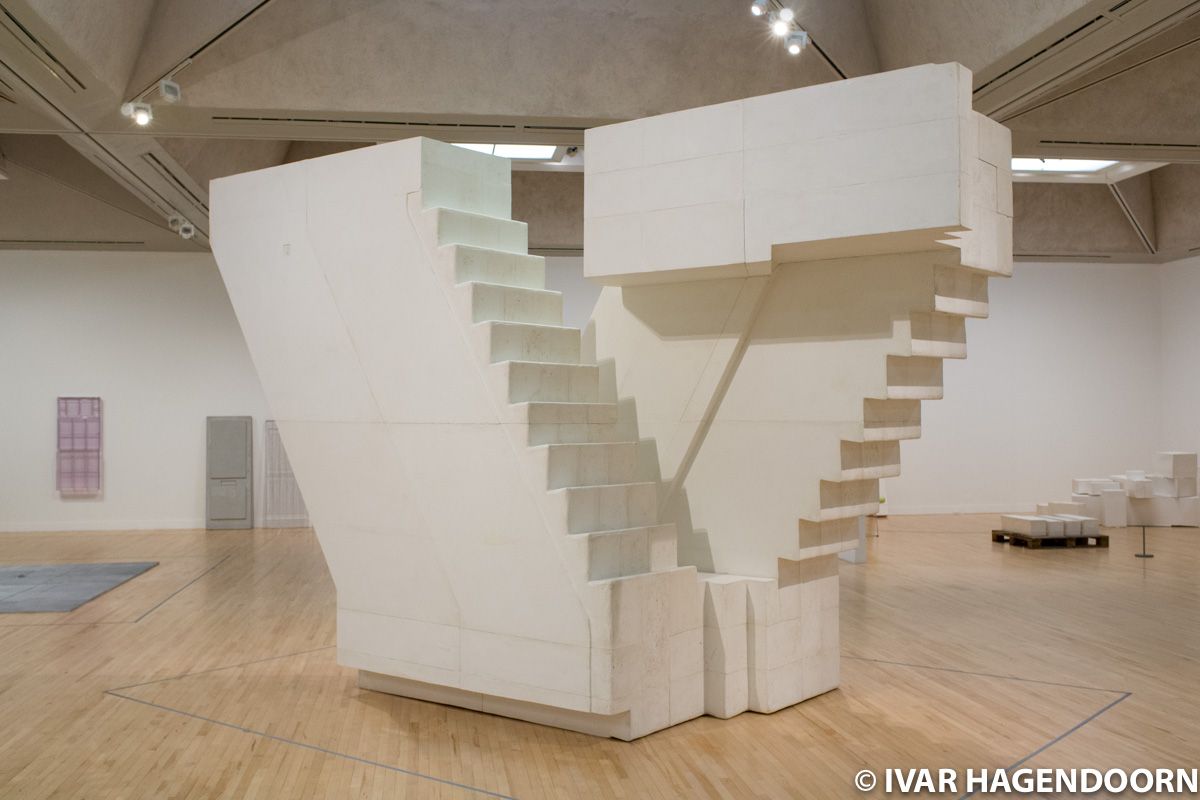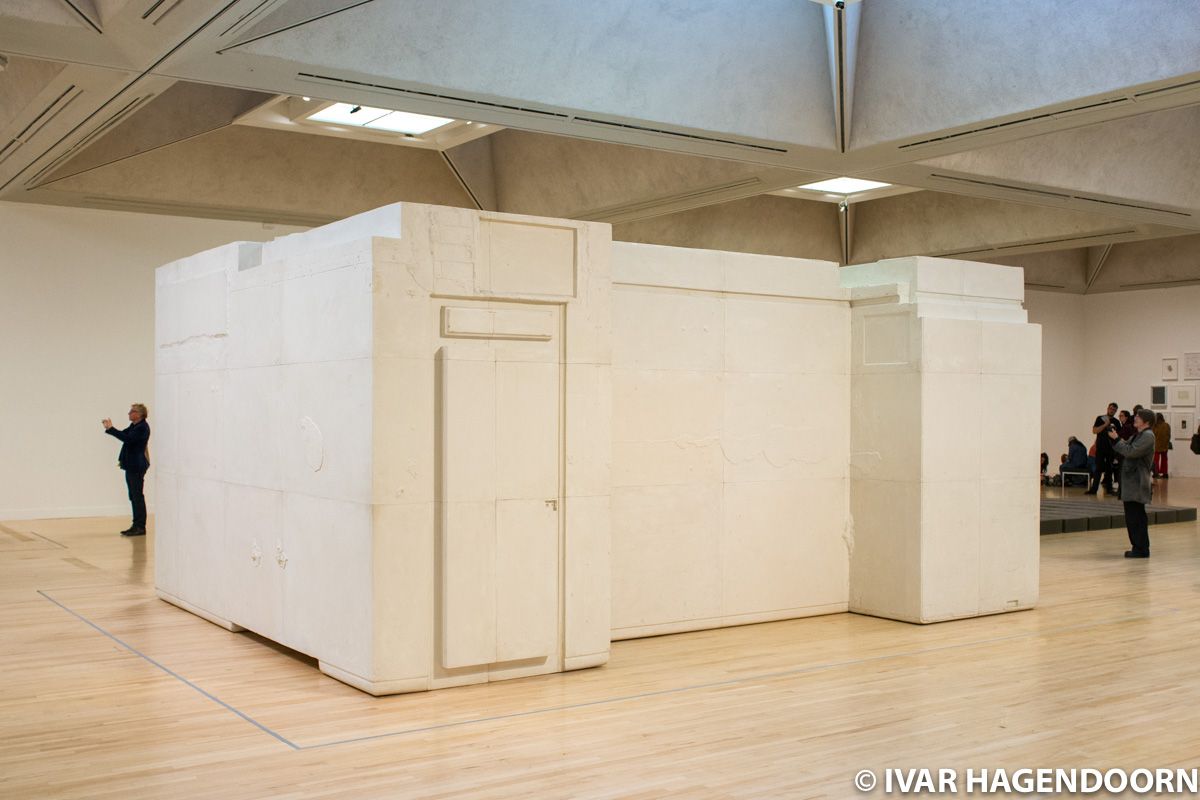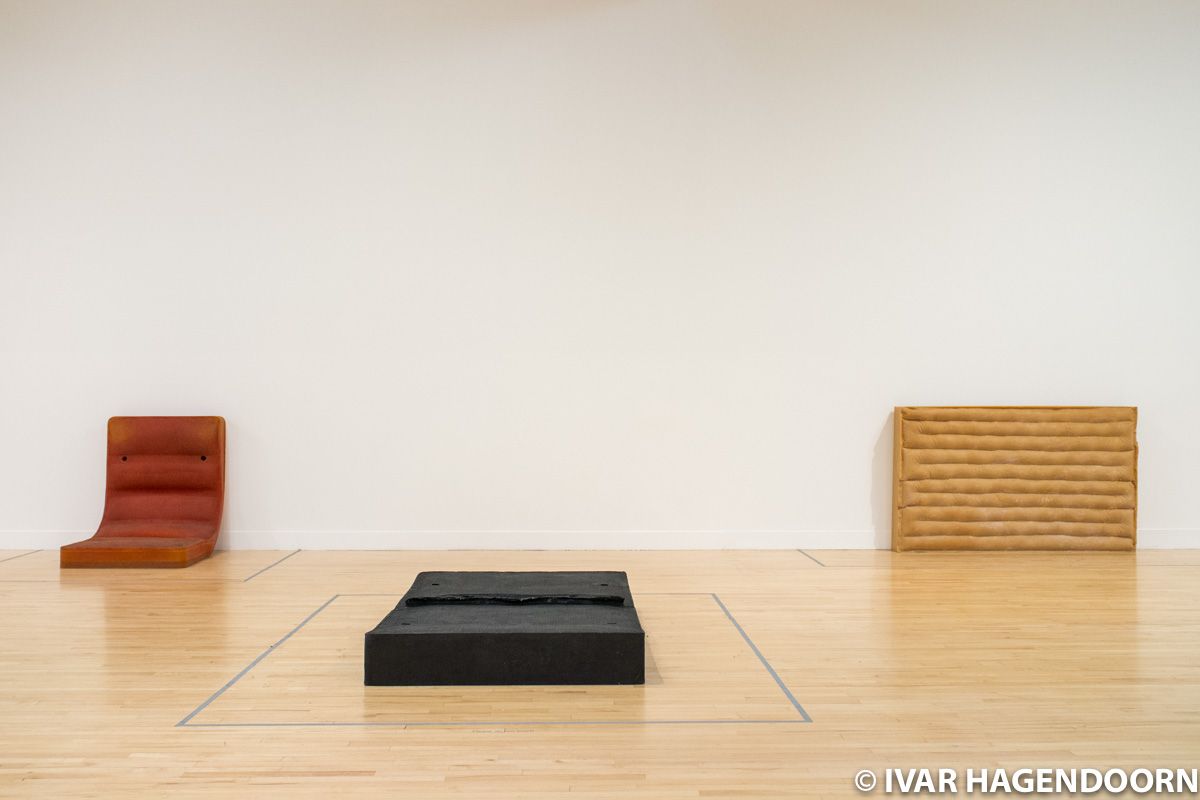


Rachel Whiteread at Tate Britain
I enjoyed the Rachel Whiteread retrospective at Tate Britain. Indeed, I left liking her work more than I did before my visit. The idea behind much of Rachel Whiteread's work is simple enough. For more than thirty years Whiteread has created casts of ordinary, domestic objects so as to render their interior or dual space tangible. This works best when the enclosed space is open, such as the space underneath a table or a chair or the interior of a wardrobe or an entire building. The cast of the inside of a can looks just like a can and the cast of a mattress looks just like a mattress.
Rachel Whiteread's work occupies an indiscriminate zone between abstract and figurative, familiar and unfamiliar. At first you see just a concrete block. It is only upon closer inspection that the object reveals itself. The imperfections in the plaster show the original object's history. Years of usage have left their mark, which are now imprinted in the plaster.
Some of Whiteread's works reference other artworks, thereby casting the original in a new light. "Untitled (Book Corridors)" is a nod to Donald Judd and "Untitled (One Hundred Spaces)" (1995), which consists of 100 casts of the underside of chairs in different shades of coloured resin, references Bruce Nauman’s "A cast of the space under my chair" (1965-68).
On the occasion of the exhibition the walls in the main temporary exhibition galleries of Tate Britain have been removed creating one large open space. This works exceptionally well as it gives the larger works space to "breathe". It also allows the visitor to walk through Rachel Whiteread's career and to look at early works from the vantage point of later works.
The exhibition is dominated by two large-scale works, "Untitled (Stairs)" (2001), and "Room 101" (2003), the plaster cast of a BBC office, demolished in 2003, which allegedly inspired George Orwell’s room 101 in Nineteen Eighty-Four.
Outside the main exhibition hall photos document what is perhaps Rachel Whiteread's most famous work, her Turner Prize-winning "House" (1993), a typical east London Victorian terraced house cast in concrete. One wishes it hadn't been destroyed, but perhaps its legendary status derives in part from the fact that it only lives on in the memory of those who've seen it and in photos such as these. Another series of photos documents some of Whiteread's recent projects: the casts of two sheds in California's Mojave desert and the cast of a boathouse on a lakeshore in Norway. They looked intriguing in all their austerity and made me want to get on a plane to try and find them.
Rachel Whiteread is at Tate Britain, London, until 21 January 2018.